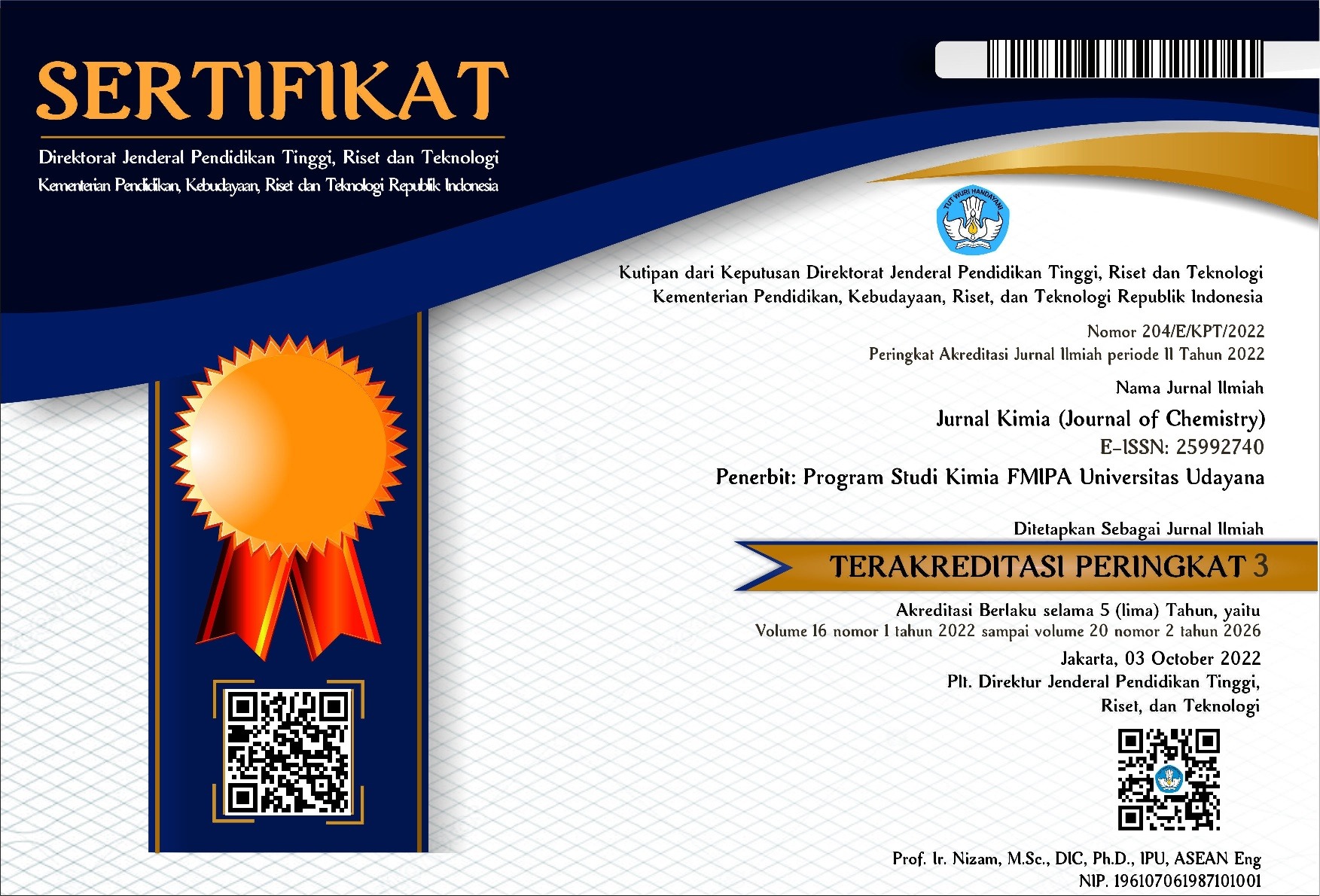DEGRADASI KOLESTEROL DAN KOPROSTANOL DALAM SEDIMEN SUNGAI
Abstract
Cholesterol and other steroid compounds like coprostanol, epicoprostanol, have been used as sourceindicator for fecal pollution in aquatic environments. This is because of the unique steroid composition of animal
feces. To determine the source of fecal pollution, the ratios of steroid compounds in the sample are used. Thus any
reaction or changes to any steroid compound in the environment will affect the determination. In this paper a study
on the interconversion of cholesterol and coprostanol in river sediments is reported. The study suggests that there is
no such changes that any steroid compounds detected in a sediment sample will show their primary sources. This
implies that the composition or ratio of the compounds can be used as source indicator for fecal pollution. The study
also found that both cholesterol and coprostanol degradation are first order with rate constants of
0,063[kolesterol]mgL-1day-1 and 0.045[kop]t mgL-1day-1 respectively.
Downloads
Download data is not yet available.
How to Cite
SUPRIHATIN, Iryanti Eka.
DEGRADASI KOLESTEROL DAN KOPROSTANOL DALAM SEDIMEN SUNGAI.
Jurnal Kimia (Journal of Chemistry), [S.l.], nov. 2012.
ISSN 2599-2740.
Available at: <https://ojs.unud.ac.id/index.php/jchem/article/view/2810>. Date accessed: 17 dec. 2025.
Issue
Section
Articles
Keywords
kolesterol, koprostanol, degradasi, aerob, steroid, feces

This work is licensed under a Creative Commons Attribution 4.0 International License





